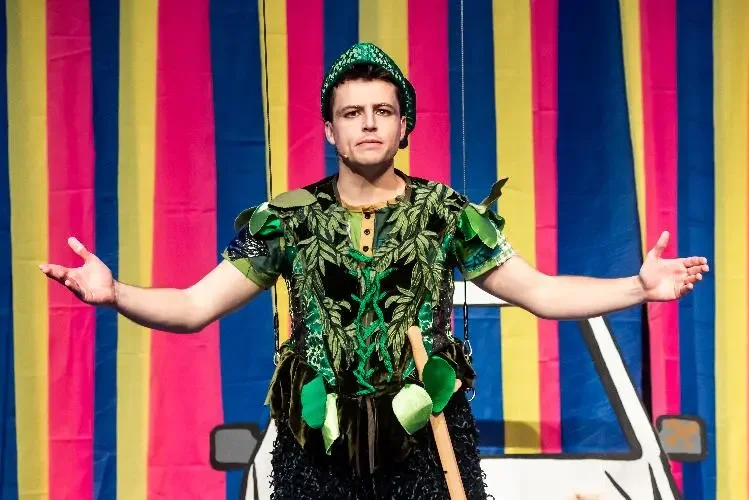Until We Sleep by Botis Seva / Far From The Norm Review
Until We Sleep production image. Photo by Tom Visser
Written by Liam Arnold for Theatre & Tonic
Disclaimer: Gifted tickets in exchange for an honest review
There's a particular moment about halfway through Until We Sleep where the entire theatre seems to collectively hold its breath. The music cuts out abruptly, leaving only the sound of eight dancers gasping for air, their bodies trembling with exertion. In that suspended silence, Botis Seva's latest work for Far From The Norm reveals its beating heart – this is a piece about what happens when we reach our limits, and what lies beyond them.
Having been revived at Sadler's Wells East, Until We Sleep feels like the natural evolution of Seva's Olivier-winning BLKDOG. Where that earlier work burned with youthful fury, this new creation simmers with a more mature, world-weary intensity. The signature Seva style remains – those glitchy, stuttering movements that make dancers' bodies appear to malfunction – but here they're deployed with more restraint and greater emotional precision. The result is a work that may initially seem less immediately impactful than BLKDOG, but which ultimately lingers longer in both memory and muscle.
The opening sequence establishes the work's central metaphor beautifully. Dancers enter one by one, each carrying their own invisible weight. Their movements are halting, sometimes reversing mid-motion as if caught in some temporal loop. There's a remarkable duet about twenty minutes in where two dancers seem to be trying to help each other stand, only to keep collapsing under unseen pressures. The way their bodies slide in and out of synchronization speaks volumes about the challenges of mutual support in difficult times.
Torben Lars Sylvest's score deserves special praise for how it elevates the entire production. The music alternates between ominous electronic drones and almost unbearable silence, with occasional bursts of distorted melody that feel like radio signals from some distant, better world. One particularly brilliant sequence features nothing but the sound of a metronome gradually speeding up until it triggers panic, mirroring society's relentless demands for productivity even as our bodies rebel. The sound design is so immersive that at certain points, I could swear I felt the bass vibrations in my teeth.
Visually, the production achieves remarkable effects through surprisingly simple means. Lighting designer Tom Visser creates entire worlds with just a few carefully placed beams – at one point, a single horizontal light casts prison-bar shadows across the dancers' bodies, while later, a stark overhead light makes their every movement look like some cruel laboratory experiment. The costumes, deliberately nondescript in muted tones, serve to universalize the dancers' struggles, making their experiences feel collective rather than individual.
What makes Until We Sleep particularly compelling is how it captures the duality of exhaustion – how fatigue can be both deeply personal and profoundly political. In the program notes, Seva mentions being inspired by "the mental toll of systemic oppression, political unrest, and a pandemic's aftermath," and you can see these influences in every strained muscle and arrested gesture. There's a section where the dancers form what looks like a production line, their movements becoming increasingly robotic until one by one they begin to malfunction. It's a potent metaphor for how systems grind individuals down, made all the more powerful by its understatement.
The work isn't without its challenges for audiences. At 65 minutes without intermission, the deliberate pacing and repetitive structures will test some viewers' patience. There are moments when the abstraction feels slightly too opaque, when you wish for just a bit more clarity to anchor the emotional experience. Yet these are minor quibbles in what is otherwise a remarkably cohesive vision.
The final moments provide a glimmer of hope that feels earned rather than sentimental. As the lights begin to fade, the dancers find ways to support each other's collapsing forms, creating precarious but beautiful human architectures. It's not a solution to exhaustion, but a recognition that shared burdens might be slightly easier to bear.
Until We Sleep confirms Botis Seva as one of the most original choreographic voices working today. His ability to transform hip-hop and contemporary techniques into something wholly his own – at once deeply personal and expansively universal – continues to astonish. While the work demands much from its audience, it repays that investment tenfold. In an era where burnout has become endemic, this feels like vital artistic medicine – not a cure, perhaps, but a powerful acknowledgment that we're not alone in our exhaustion.
A challenging, often breathtaking work that marries stunning movement with profound emotional resonance. While its deliberate pace won't be for everyone, those willing to sit with its discomfort will find much to admire in this meditation on resilience.
Until We Sleep will play at Sadlers Wells East until 28th June
★ ★ ★ ★















